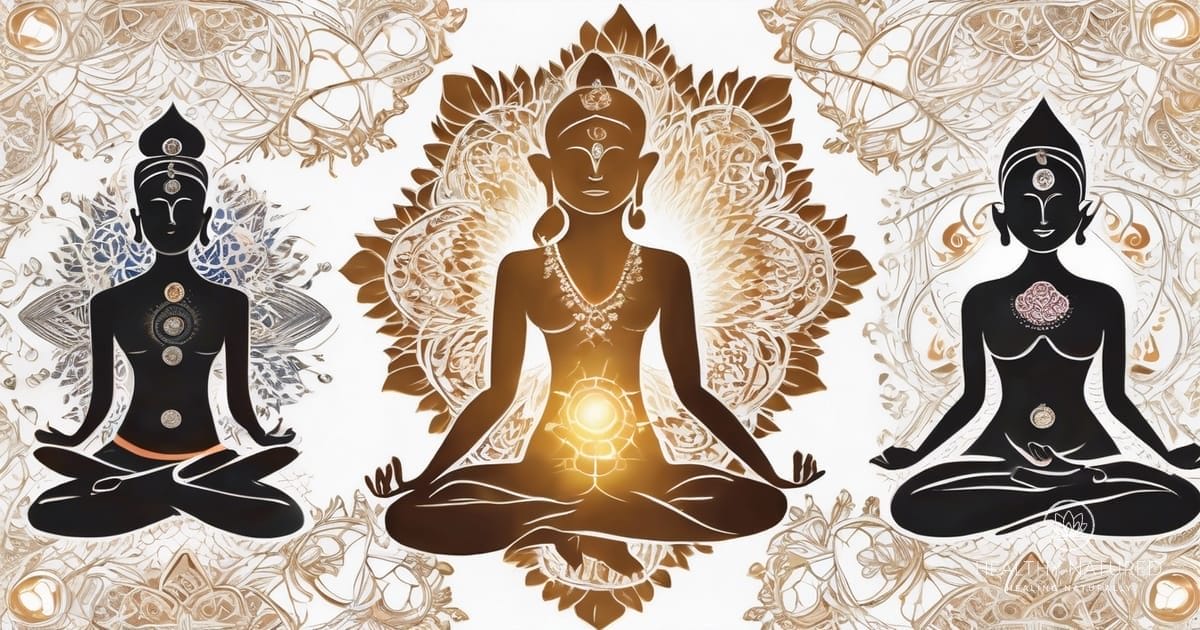- The Ayurveda System and the Concept of Doshas
- What Are The Doshas? Vata, Pitta and Kapha
- Explore Vata Dosha: Traits, Strengths, and Signs of Imbalance
- Explore Pitta Dosha: Traits, Strengths, and Signs of Imbalance
- Explore Kapha Dosha: Traits, Strengths, and Signs of Imbalance
- Take a Dosha Self-Test: Find Your Ayurveda Body Type
- Balance the Doshas: Lifestyle, Diet, and Environmental Strategies
- Connect Dosha Knowledge to Health, Disease, and Working with Professionals
- Conclusion
- FAQ
Have you ever wondered why some people seem naturally energetic, while others prefer to move at a steady, laid-back pace—or why stress affects everyone so differently? According to Ayurveda, these patterns aren’t just quirks of personality, but are rooted in something much deeper: your unique balance of the three doshas.
But, what are the doshas? Ayurveda, an ancient system of holistic health, describes them as vital energies that weave together mind, body, and environment—shaping how you think, feel, and thrive. Unlocking the secrets of Vata, Pitta, and Kapha doesn’t just offer ancient wisdom; it can be a practical guide to understanding your strengths, spotting early signs of imbalance, and making simple lifestyle tweaks for better health.
Stick with me, and you’ll discover how these fascinating elements can transform your approach to well-being—from identifying your dosha to keeping each one in harmony.

The Ayurveda System and the Concept of Doshas
Ayurveda is a traditional Indian medical system that has been practiced for thousands of years, rooted in the idea of cultivating holistic health by treating the mind, body, and spirit as one interconnected entity. Unlike many modern approaches that focus on isolated symptoms, Ayurveda looks for the root causes of physical and mental imbalances through a comprehensive understanding of each individual.
At its heart, Ayurveda introduces the concept of the three doshas—energetic forces believed to shape every person’s unique constitution and health patterns. The doshas are derived from five fundamental elements: earth, water, fire, air, and space, each contributing specific qualities to the human body and mind.
The three Ayurvedic doshas—Vata, Pitta, and Kapha—represent unique blends of these elements, influencing everything from your digestion, immunity, and skin to your mood and thought processes. The main goal of Ayurveda is to sustain a healthy equilibrium among the doshas; when these energies are balanced, you experience disease prevention, natural healing, and an overall sense of wellbeing.
Classical texts like the Charaka Samhita and Sushruta Samhita laid the groundwork for dosha theory, and their teachings continue to be referenced by modern ayurvedic practitioners.
Today, Ayurveda’s principles are supported by a growing body of research exploring their benefits for chronic disease prevention and improved quality of life. Interest in holistic therapies has also risen worldwide as more people seek personalized, non-invasive solutions for optimal health.
To dive deeper into these foundational ideas, visit this detailed Ayurveda resource.

What Are The Doshas? Vata, Pitta and Kapha
In Ayurveda, the three primary doshas—Vata, Pitta, and Kapha—are seen as the forces that drive all physiological and psychological processes in the body. Understanding these dosha types is essential to identifying your unique ayurvedic constitution and making health decisions that are authentically suited to you.
- Vata Dosha is primarily made up of the air and space elements, giving it qualities like lightness, mobility, and dryness.
- Pitta Dosha is a combination of fire and water, manifesting as heat, sharpness, and a transformative energy both mentally and physically.
- Kapha Dosha draws from earth and water, creating characteristics of stability, heaviness, and moisture.
Each individual possesses all three doshas, but in varying proportions; typically, one or two will predominate, forming your core ayurveda body type. It’s also very common to have a dual-dosha or even a tri-dosha constitution, where two or all three doshas are nearly equally present and influence characteristics, metabolism, and health tendencies.
A frequent misconception is the idea of a “fourth dosha”—however, in classical ayurvedic practice, only Vata, Pitta, and Kapha are recognized.
For more in-depth information on how these energies shape everything from your skin to your mental patterns, check out this comprehensive guide to dosha types characteristics, where you can begin to identify which dosha or combination of doshas most closely describes you.

Explore Vata Dosha: Traits, Strengths, and Signs of Imbalance
The Vata dosha is rooted in the elements of air (vayu) and space (aakash), making it the most mobile and subtle of the three doshas in Ayurveda. This combination shapes Vata’s core qualities: dryness, lightness, coldness, irregularity, mobility, and clarity.
Physically, people with a predominant Vata dosha, often referred to as “Vata body types,” tend to have a slimmer or lanky frame, with noticeable veining and flexible joints. Their skin is usually dry or thin, and they may feel cold easily, especially in windy or cool environments.
Emotionally and mentally, Vata traits include creativity, enthusiasm, quick-thinking, and adaptability. Their minds can flit rapidly from idea to idea, resulting in bursts of inspiration but also occasional distraction or restlessness. Famous personalities often linked to predominant Vata qualities are inventors, artists, or public speakers whose originality and charisma are undeniable.
A balanced Vata brings exceptional imagination, agility, and zest for new experiences, fueling innovation and communication. Many Vata types thrive on variety and exploration, making them natural social connectors or inspiring idea generators in teams.

However, when Vata goes out of balance—often triggered by overstimulation, irregular routines, cold weather, excessive travel, or fasting—distinct dosha symptoms begin to emerge. Common signs of Vata imbalance include:
- Insomnia or disrupted sleep patterns
- Anxiety or worry
- Irregular appetite and digestive issues like bloating or constipation
- Dry skin, chapped lips, brittle hair
- Feeling scattered, forgetful, or easily overwhelmed
Those who practice intermittent fasting should be mindful, as excessive fasting or skipping meals can swiftly unbalance Vata. If you notice these manifestations, simple adjustments—like warming routines, regular meal times, and calming activities such as abhyanga (full body oil massage)—can offer relief. Addressing Vata vitiation early helps restore the mobile, creative spark while protecting long-term health and emotional equilibrium.
ELEMENTS:
AIR & SPACE
attributes of a vata dosha and cHARACTERISTICS:
COLD, ROUGH, LIGHT, SWIFT, MOBILE, DRY
Vata Dosha.
- Thin light and wiry framed body
- long tapered fingers and toes
- small dark eyes, small mouth, thin lips
- dry skin and can be rough
- hair is regular to dry
- extreme sensitivity to cold, wind and dry weather
- cold extremities – hands, feet, nose
- erratic appetites, irregular digestion
- highly imaginative but often with disjointed thoughts
- open and tolerant of others
- energetic but sporadic
- light restless sleep
PACE
Balanced Vata promotes creativity and flexibility.
When Vata doshas are out of balance it produces fear and anxiety.
Physical Ailments: emphysema, pneumonia and arthritis
Vata Brain-type have characteristics of quick learners, are creative, can multi-task and have compassion and kindness.
Their body type is often energetic and slender.
Find Balance Within vATA
KEEP WARM – MAINTAIN CALMNESS – AVOID RAW OR COLD FOODS STAY OUT OF COLD WEATHER – KEEP A REGULAR ROUTINE
Unlike the doshas of pitta and kapha when vata has imbalance the nature of this dosha is:
- Impacted nervous system
- Emotions in turmoil
- May develop anxiety
- Sensitivity to the cold
- Appetite may increase or decrease easily
- May develop digestive problems
- Poor circulation
- Difficulty sleeping
To Balance:
- Stay in warm and moist environments.
- Be around supportive and warm people who make you feel relaxed.
- Seek sweet fragrances and warm, sweet types of music
- Eat soft and warm foods
- Engage in meditation
- Intermittent fasting may be helpful
- Consume more foods that have sweet, sour and salty tastes.
- Foods that you should eat more of are cooked vegetables, fresh berries, eggs, and dairy products.

Explore Pitta Dosha: Traits, Strengths, and Signs of Imbalance
Pitta dosha is governed by the elements of fire (tejas) and water (jala), giving it a distinct character marked by intensity, sharpness, and transformational energy. The key qualities of Pitta include heat, lightness, sharpness, slight oiliness, and a penetrating nature—both physically and mentally.
On the physical side, individuals with prominent Pitta dosha often have medium, athletic builds, warm bodies, and lustrous, oily skin. They sweat easily, have a strong metabolism, and may experience early graying or thinning of hair. Pitta is famously connected to a pronounced appetite and preference for cool drinks or foods to counter their internal heat.
Mentally and emotionally, Pitta types embody focus, ambition, and analytical thinking. They’re decisive, organized, and have leadership tendencies—traits that serve them well in competitive or fast-paced environments. Classic Pitta personalities are strong-willed leaders, high-achieving entrepreneurs, or outspoken reformers, known for their drive and clarity of vision.
When Pitta is balanced, it yields courage, intelligence, and enthusiasm—crucial qualities for progress and success. Pitta people excel at managing detailed projects, orchestrating teams, and standing up for causes with conviction.

But too much fire can burn. Common symptoms of Pitta imbalance include:
- Irritability or anger
- Perfectionism, impatience, or judgmental attitudes
- Heartburn, acid reflux, or other digestive complaints
- Inflammatory skin conditions such as rashes, acne, or hives
- Excessive body heat, sweating, or sensitivity to hot weather
If you notice these traits intensifying, it may be time to seek cooling activities, gentle relaxation practices, or dietary adjustments such as reducing spicy foods. Famous individuals who exemplify balanced Pitta qualities include confident athletes, dynamic politicians, or influential advocates—those who lead change with both passion and precision. Recognizing and respecting the fiery Pitta nature empowers you to channel its strengths and avoid common pitfalls of excess.
ELEMENTS:
FIRE & WATER
nature of the doshas CHARACTERISTICS:
HOT, SHARP, LIGHT, LIQUID, MOBILE, OILY
Pitta Dosha.
- Body Types are medium to heavy, strong, well-built
- skin is fair, warm, reddish, soft and moist.
- many freckles and moles.
- Skin may have rashes and acne.
- Hair is normally fine, straight with a tendency for thinning
- Burn easily in sun, sensitive to humidity adn heat
- Robust appetite, irritable when meals skipped
- Have a very sharp mind
- Good powers of concentration
- Good circulation
- Strong metabolism
- Normally seek to avoid and dislike hot weather
- Benefits from daily meditation after 6 p.m.
- Overheat during sleep
- Burn candle both ends
PACE
Balanced Pitta promotes intelligence and understanding.
Imbalance or Vitiation in the Pitta produces anger and jealousy.
Physical Ailments: fevers, inflammatory diseases and jaundice.
Pitta in the body controls digestion and how we judge what is right and wrong.
Nature of the doshas in Pitta mean they are quick learners, good leaders, are motivated, determined and tenacious.
Pitta is associated with fire, this manifest with strong metabolism
find balance Within PITTA
avoid excessive heat or steam – avoid excess oil – LIMIT SALT INTAKE – EXERCISE ONLY WHEN ABLE TO KEEP COOL
Vitiation in any dosha can happen but in pitta means:
- Easily lose patience
- Quick to anger
- Quick to enter into conflict
- Gets hungry easily
- May exhibit mood swings
- Sensitive to hot temperatures
- May have health concerns particularly with inflammation
How To Balance
- Be in a cool environment.
- Provide yourself comfort such as soft beds or cushions.
- Take time out in a silent meditation retreat.
- Make sure you only be in places that have a relaxed environment.
- Eat foods that are light and sweet.
- Eat foods that are fresh and cold.
- Food types to eat plenty of are fruits, vegetables, and salads.
- Foods should be naturally sweet, sour or bitter.
- Processed or refined foods are to be avoided.

Explore Kapha Dosha: Traits, Strengths, and Signs of Imbalance
Kapha dosha is rooted in the elements of earth and water, making it the most stable, steady, and grounding force among the three primary doshas in ayurveda. Kapha’s qualities are heavy, cool, oily, smooth, and slow, often associated with robust endurance and calm temperament.
Physically, people with predominant kapha dosha typically have solid, well-built bodies and smooth, radiant ayurvedic skin. Their energy is steady, they sleep deeply, and their immune functioning is resilient—kapha types often rarely fall ill.
Mentally and emotionally, kapha dosha manifests as compassion, patience, and emotional stability. These individuals are nurturing, loyal, and tend to keep balanced, caring relationships. They’re not easily provoked and usually handle stress with calm persistence.
A balanced kapha supports good health, helping to maintain joint lubrication, strong immunity, healthy digestion, and stable cardiovascular function. Their temperament often brings peace and reliability to families, workplaces, and communities.
However, kapha imbalance can surface as physical and mental sluggishness, weight gain, excess mucus, water retention, allergies, and a tendency toward depression or lethargy. Emotionally, an aggravated kapha might become stubborn, resistant to change, or apathetic, withdrawing from stimulation or social connections.
For instance, a classic kapha dosha personality is Mother Teresa—her compassion, endurance, and steady care for humanity exemplify this ayurvedic type. Other famous examples might include Oprah Winfrey and Dwayne “The Rock” Johnson, both known for strength, warmth, and persistence—typical kapha dosha characteristics.
If you recognize slow metabolism, aversion to damp weather, or heaviness in body or mind, these can be signs that your kapha needs attention. Listening to your dosha symptoms helps guide your approach to optimal health.

ELEMENTS:
WATER EARTH
CHARACTERISTICS:
HEAVY, SLOW, COLD, OILY, SMOOTH, SOFT
Kapha Dosha.
- Body type is a larger sturdy build
- Stocky, gain weight easily
- Regardless of size they are usually physically strong
- Skin is oily and moist, usually pale
- Soft, thick, oily hair that is wavy and plentiful
- Usually very white teeth
- Strong bones and joints.
- Strong immunity.
- Deliberate thought patterns; Reflective and Calm
- Dislike of damp and/or cold weather
- Cool extremities that may be clammy
- Heavy sleepers with a tenency to over sleep
- Early to bed and early to rise is best for the Kapha
- Grounded and stable individuals
- They are powerful but incredibly caring.
- Supportive of others
PACE
Balanced Kapha promotes calmness and forgiveness.
Imbalance or vitiation in the doshas for Kapha produces greed and envy.
Physical Ailments: Flu, Sinus, Congestion and Excess mucous.
Kapha provides the body lubrication for our physical form, and smooth function of the body parts.
Kapha ayurveda type are caring in nature, are empathetic, calm, composed and patient. They trust others and are wise and mature.
Kapha in the body gives people substance and is related to loyalty, strength and patience.
how to balance KAPHA
staying active – ensuring plenty of exercise – avoiding heavy oily foods – limit dairy and iced drinks- vary your daily routine.
When Kapha is an unbalanced body type ayurveda tells us this shows with:
- Slow or sluggish metabolism
- They may put on weight quickly
- May be prone to oversleeping
- They may have respiratory issues
- Potential to be at risk of developing heart disease
- May have little motivation
- Prone to developing depression
The functioning described in this table helps Kapha find Balance:
- Be in warm and dry environments.
- Accept emotional support from loved ones.
- Be more active and take exercise
- Consider daily fasting
- Add foods to your diet that have pungen or bitter tastes.
- Eat more spicy foods
- East more acidic foods
- Food types to include in the diet are whole grains, eggs, low-fat cheese, and spices.
- Improve circulation by taking exercise.

Take a Dosha Self-Test: Find Your Ayurveda Body Type
The self-test usually asks about factors like body frame, energy cycles, digestion, sleep patterns, emotional responses, and even food preferences. By honestly answering each question, you reveal a profile of your predominant dosha or blend—whether vata, pitta, kapha, or a combination.
Discovering your unique ayurvedic dosha—or mix of doshas—starts with self-inquiry. An accessible way to begin is by taking a Quiz to Discover Your Dosha that assesses physical, mental, and emotional patterns.
If your results reveal dominance in one dosha, you’ll find practical health advice tailored to your specific ayurveda body type. Typical recommendations relate to ayurvedic diet, optimal physical activity, and daily ayurvedic practices for maintaining healthy balance.
For those with dual-dosha or tri-dosha (mixed) results, interpretation focuses on noticing which dosha is most easily vitiated under stress or environmental change. Kapha-pitta, vata-kapha, or “sama dosha” types can adjust lifestyle strategies according to which imbalance symptoms arise at different times or seasons.
Consider retesting annually, or as you move through life changes, since your physiological patterns and behavioral characteristics evolve. This self-awareness forms the cornerstone of a holistic approach for lifelong wellbeing, making it easier to choose personalized ayurvedic remedies, therapies, or connect with an ayurvedic practitioner for deeper guidance.
Want to take an Ayurvedic Dosha assessment? Follow this link to take the test.
Exploring the qualities of your dosha(s) is the first empowering step along your ayurvedic health journey.

Balance the Doshas: Lifestyle, Diet, and Environmental Strategies
Striving for a balanced state among the three Ayurvedic doshas—Vata, Pitta, and Kapha—requires an intentional approach to daily habits, diet, movement, and environment. Personalizing these choices according to your dominant dosha, as revealed by a dosha quiz or assessment, can promote optimal health, disease prevention, and everyday wellbeing.
For those with a Vata dosha predominance (associated with air and space), balance starts with grounding routines and nourishment. Choose cooked, well-spiced, moist foods like stews, root vegetables, ghee, and warming herbs. Regular mealtimes, sufficient sleep, and gentle exercises such as yoga, slow walking, or calming meditation help soothe the restless Vata mind and support stability. Avoid overstimulation, caffeine excess, and bitter or raw, cold foods, which can aggravate Vata’s natural tendencies toward dryness, anxiety, and insomnia.
If Pitta dosha is your primary type (linked to fire and water elements), focus on cooling, calming, and moderating physical activity. Favor sweet, bitter, and astringent foods—leafy greens, cucumber, dairy, and herbs like coriander or mint. Reduce spicy foods, alcohol, and fried items, since these can increase internal heat and lead to inflammation, irritability, or skin flare-ups. Spending time in nature, especially near water, practicing mindfulness, and scheduling regular breaks helps soothe the fiery Pitta temperament.
Kapha dosha types (earth and water) benefit from invigoration and lightening—think warm, spicy, and mildly astringent foods such as cooked legumes, ginger, and plenty of vegetables. Emphasize physical movement, including brisk walks or stimulating exercises, to counteract lethargy. Decluttering, avoiding heavy dairy or oily foods, and enjoying regular herbal steam therapy may also support lighter, clearer energy and reduce Kapha-related stagnation.
Across all dosha body types, classic Ayurveda recommends a lifestyle anchored in natural cycles: rising with the sun, practicing daily abhyanga (full body oil massage), and observing mindful eating rituals. Modern research continues to affirm the value of these natural remedies and daily choices for emotional and physical balance.
If you’re starting out, consider adding specific herbal remedies aligned to your needs—such as ashwagandha for Vata, brahmi for Pitta, or trikatu for Kapha—under the guidance of a knowledgeable ayurvedic practitioner. For best results, adapt your routine to seasonal changes, and be mindful to choose warming, cooling, or grounding foods and activities as your dosha levels shift. Balancing your doshas is not about restriction but about tuning in to your body’s unique signals, using simple Ayurvedic practices to nourish both body and mind.

Connect Dosha Knowledge to Health, Disease, and Working with Professionals
These distinct dosha symptoms are more than theoretical—they help guide practical, early health interventions before disease fully develops. Ayurvedic medicine holds that many chronic diseases originate from long-standing dosha imbalance, often related to improper diet, disrupted routines, emotional stress, or exposure to toxins. By keeping your doshas in harmony through appropriate natural treatments, you can actively promote resilience and sustained wellbeing.
Understanding the interplay of your unique dosha body type and its balance is foundational to health in Ayurveda. When a dosha becomes aggravated or depleted, it can manifest as specific symptoms—Vata vitiation may present with anxiety or dryness; excessive Pitta can trigger inflammatory disorders or acidic digestion; Kapha imbalance often leads to lethargy, weight gain, or respiratory problems.
Scientific studies, such as those reviewed in recent meta-analyses, report improvements in physical and mental health outcomes when Ayurvedic dietary and lifestyle strategies are consistently followed. Some evidence suggests enhanced immune functioning, improved stress management, and even reduction in risk factors for diabetes or hypertension among those who regularly balance their predominant dosha(s). However, Ayurveda works most effectively as a complement to—not a substitute for—conventional medical help, especially in acute, severe, or complex conditions.
If you’re facing ongoing health challenges or want to tailor an effective plan, connecting with a skilled ayurvedic practitioner ensures a safe, individualized approach. These professionals assess your constitution, investigate possible dosha imbalances, and recommend targeted Ayurveda therapies, diet, and natural remedies for optimal outcomes. If you need assistance finding a practitioner or have specific questions about your health, you can contact me directly by clicking here for more resources and connections.
Remember, the information offered is for educational purposes and isn’t a substitute for a formal diagnosis or medical treatment by a licensed healthcare provider. For ongoing health issues or symptoms outside the scope of traditional ayurvedic practice, always consult your primary care doctor or specialist. Integrating dosha knowledge into your life enhances not just physical health, but resilience, mental clarity, and a greater sense of harmony with your unique constitution.
Understanding the doshas—Vata, Pitta, and Kapha—offers a powerful way to view your own health and well-being through the lens of Ayurveda. These unique energies, rooted in the five elements, shape your body type, tendencies, and even your emotional outlook.
Conclusion

Awareness of your primary dosha can help you make better choices in diet, lifestyle, and self-care that keep you balanced and resilient. While Ayurveda encourages self-reflection, working with a qualified practitioner can deepen your insights and guide your journey.
Take time to discover your unique dosha makeup and begin small, practical changes—from mindful eating to stress management—that foster natural harmony. Ultimately, learning about yours empowers you to tune into your body’s needs and move toward lasting health.




